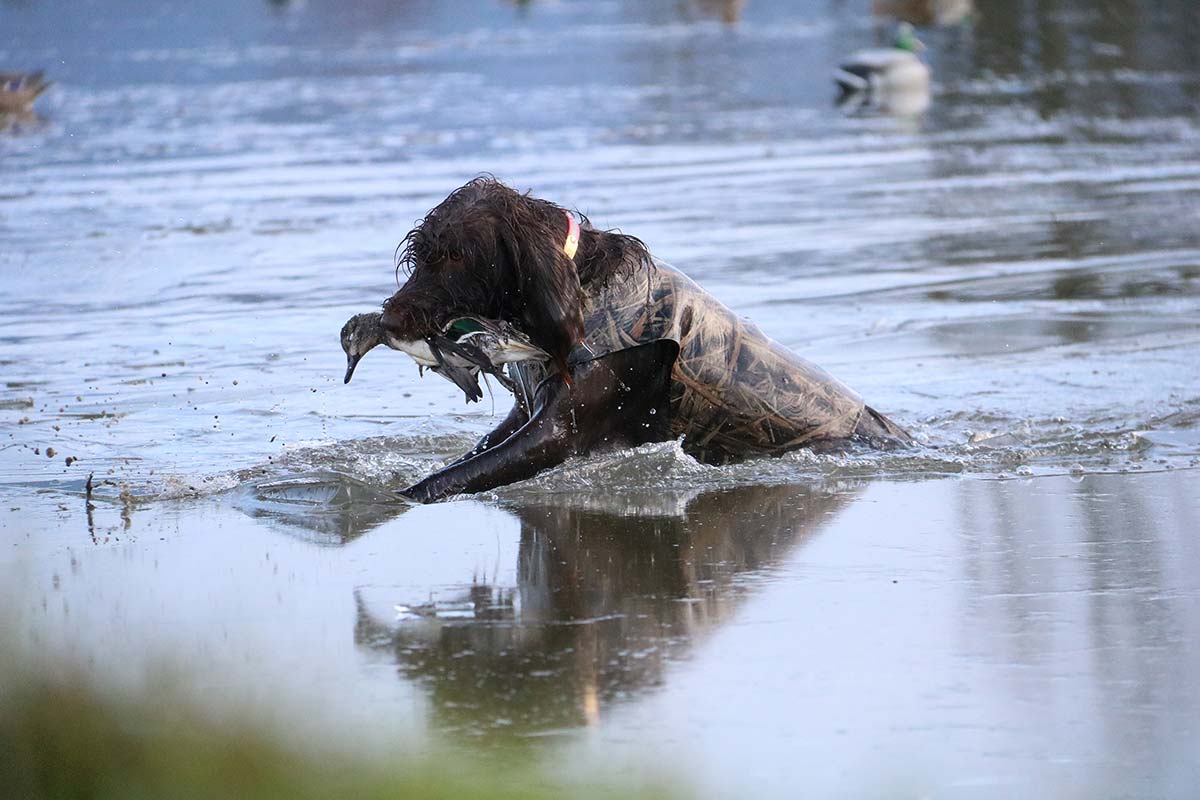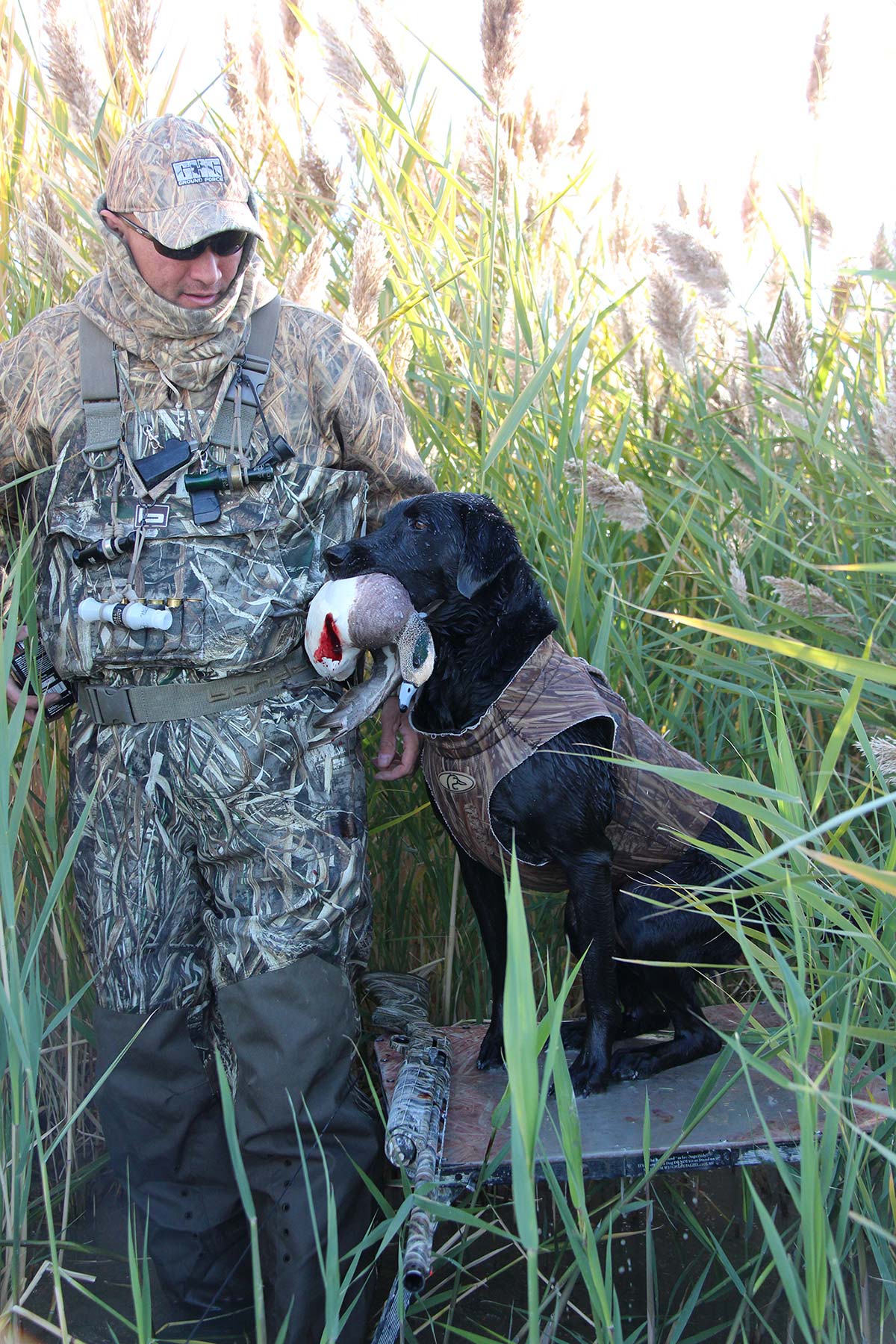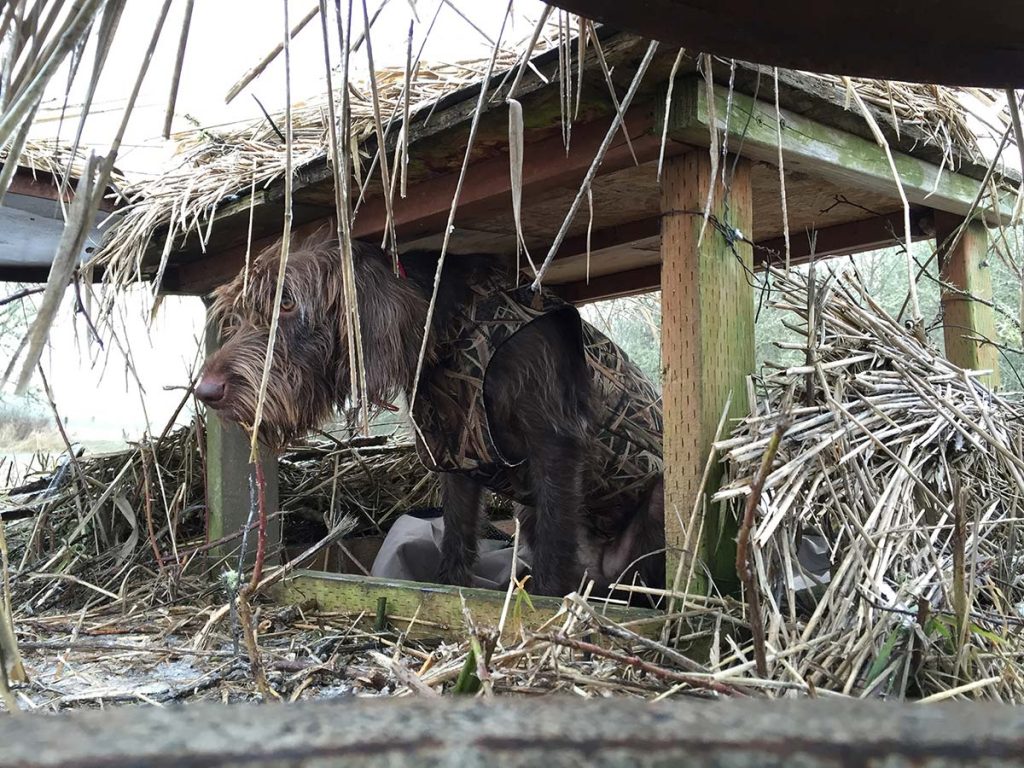Though waterfowl season throughout the country has been underway for a few weeks, November marks the start of the best hunting. Cold days, rainy weather, and migrating ducks and geese means the hunting is only going to get better as the season goes on. With the changing conditions, make sure your pup is ready for the hunt.
If this is the first season of waterfowl hunting with your pup, make certain you’re doing all you can to ensure the dog’s safety and comfort. When hunting waterfowl from a blind, having a platform for the dog to stand on is important. A platform allows the dog to stand all day, out of the water, and stay dry. Forcing a dog to stand in the water all day can be very cold and unhealthy, especially if there are any open wounds or cuts on the feet.
Platforms also keep your dog dry and comfortable, allowing them to be an active part of the hunt by marking approaching ducks and geese. Start this early in life and in a few years they’ll be spotting more birds than you, which is one of the greatest joys of waterfowl hunting with a dog.
There are dog stands that attach to trees, folding dog stands that can stand in shallow water, and stands with covers on them which act as a blind for your dog. It’s a good idea to do some work with your pup before the hunt so it knows its place and what the purpose of the stand or blind, serves.

If hunting on dry ground, dog blinds are a good idea. If it’s a permanent ground blind you’re hunting from, you can build a box frame for the dog and line it with straw or a mat to keep the dog warm. Be sure that whatever you put in the blind for the dog to sit or lay on, allows water to drain. You don’t want the dog coming in soaking wet on every retrieve and have to lay in water.
A dog vest is also essential for keeping a dog warm on cold days. I like neoprene as it insulates and adds lift, making it easier for the dog to swim long distances and retrieve bigger birds. A vest with a handle on the back is nice in case you have to lift the dog into a boat, blind, or help it up a muddy bank.
Make sure the vest fits your dog’s body type and size. My dogs are both pudelpointers and are big in the shoulders and chest, small in the hind quarters, and I found a Browning neoprene vest fits them, best. I went through a half-dozen brands to find the one that fit right and didn’t rub them raw under the legs and chest.
Before the hunt be sure to run your dog with the vest on. Make sure it fits right, and if needed, trim places where it’s rubbing, usually behind the shoulders and between the legs and underside of the chest. If hunting amid cattails, rushes, and thick reeds, having a dog vest with a sturdy, yet flexible chest plate is great for helping break through these messes, and it guards them from getting cut. A chest plate also helps protect dogs when busting through ice later in the season.
On the morning of the hunt I never feed my dogs. I take their food in the truck and don’t give it to them until after the hunt, as I want no food in their stomachs when hunting. Stomach twist is a very real and a deadly threat, I know, Kona, my male pudelpointer experienced it when he was four years old. Fortunately we were home and could get him to a vet right away where he underwent an emergency surgery that saved him. Had it happened in the field he would have been dead before I could reach help.

If hunting on dry ground where dogs don’t have access to water, take drinking water for them. Make sure your dog drinks no matter how cold it is outside. Dogs lose a lot of moisture just by breathing and they expend a lot of energy running and swimming. Just like you, dogs must stay hydrated when afield. If they won’t drink make them. Take a squirt style water bottle, grab the corner of the dog’s lip, pull it away from the corner or the jaw, insert the bottle and squeeze water into the pocket. They have to drink it.
If hunting in fields or areas of tall grass and weeds, it’s a good idea to take a fine-toothed brush along if you own a dog with long hair. You don’t want to get seeds or burs matted into the wet hide, especially under the dog vest, so combing or even cutting them out is a good move. This can be done when there’s a lull in the action.
As winter continues to approach, along with the ducks and geese, make sure your dog is comfortable and safe. With the best days of the season still ahead, you want your dog in top physical condition so you’ll be able to enjoy each and every hunt together.
Note: To watch Scott Haugen’s series of short puppy training videos, visit www.scotthaugen.com



